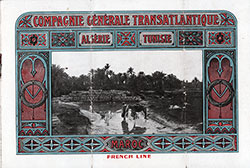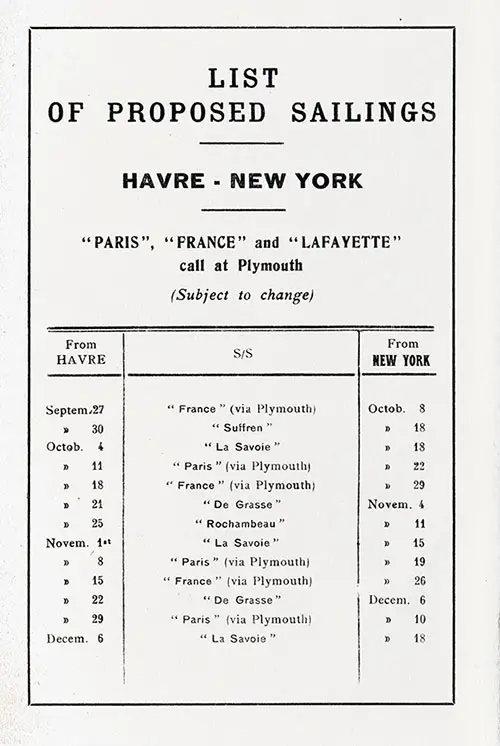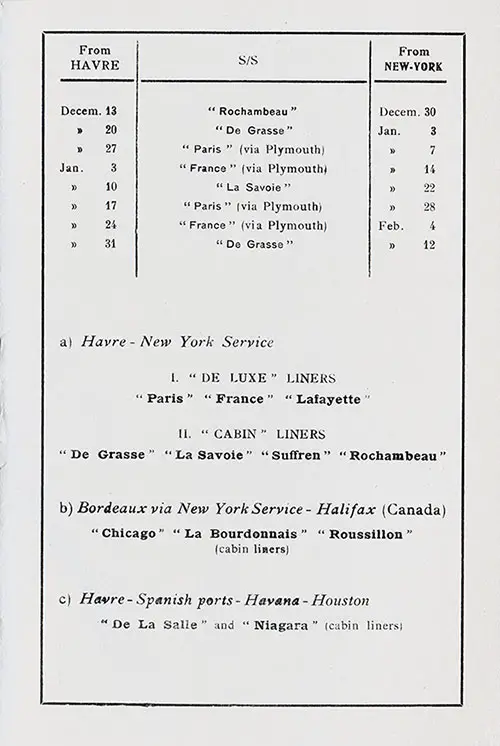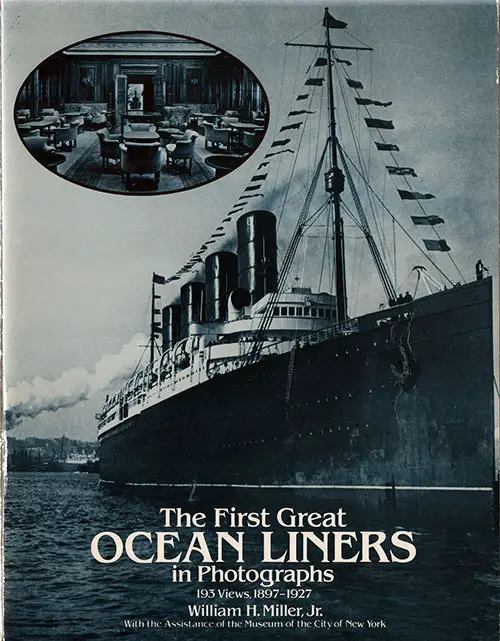SS Rochambeau Archival Collection
Rochambeau (1911) French Line
Built by Chantiers & Ateliers de St. Nazaire, Penhoet, France. Tonnage: 12,678. Dimensions: 559' x 63'. Quadruple-screw, 15 knots. Triple expansion engines and steam turbines. Two masts and two funnels. Launched: March 2, 1911. Maiden voyage: Havre-New York, November 16, 1911. Fate: Sold for scrap to Gosselin & Dumouries at Dunkirk in May 1934.

1918-02-03 SS Rochambeau Passenger List
Steamship Line: Compagnie Générale Transatlantique / French Line (CGT)
Class of Passengers: Cabin
Date of Departure: 3 February 1918
Route: Bordeaux for New York
Commander: Captain Brevet

1919-06-11 SS Rochambeau Passenger List
Steamship Line: Compagnie Générale Transatlantique CGT - French Line
Class of Passengers: Cabin
Date of Departure: 11 June 1919
Route: Le Havre to New York
Commander: Captain Juham

1922-11-07 SS Rochambeau Passenger List
Steamship Line: Compagnie Générale Transatlantique CGT - French Line
Class of Passengers: Cabin
Date of Departure: 7 November 1922
Route: Le Havre to New York via Plymouth
Commander: Captain Léon Rollin

Sailing Schedule (Part 1 of 2), Le Havre-New York via Plymouth, from 27 September 1924 to 18 December 1924. Ships Included the De Grasse, France, La Savoie, Paris, Rochambeau, and Suffren. SS France Passenger List, 27 September 1924. | GGA Image ID # 1e5c9e2ea0

Sailing Schedule (Part 2 of 2), Le Havre-New York via Plymouth, from 13 December 1924 to 12 February 1925. Ships Included the De Grasse, France, La Savoie, Paris, and Rochambeau, and Suffren. SS France Passenger List, 27 September 1924. | GGA Image ID # 1e5cd0016f

The First Great Ocean Liners in Photographs - 1983
Sumptuous volume recalls the glorious early years of elegant transatlantic travel. Over 190 historic photographs depict exterior and interior views of 101 great ocean liners, including the Virginian, Imperator, Vaterland, Bismarck, Lusitania, Mauretania, Balmoral Castle, Titanic, Olympic, Aquitania and dozens more. Full captions.
The French Liner Rochambeau
A VERY good example of modern French steamship practice is to be found in the steamship Rochambeau which, built by the Chantiers & Ateliers de St. Nazaire, has been put into commission for ordinary passenger and emigrant service.
This vessel, which is illustrated herewith, is 163 meters long, 13.2 meters in depth from the spar deck bridge, and has a draft of 8.16 meters when loaded, and a corresponding displacement of 17.417 metric tons.
It has been designed to carry 428 second class passengers (there are no first class), 200 third class passengers and 1.248 emigrants, and in its arrangement presents a very good example of this class of boat.
The engines are of the triple expansion four cylinder type, while Howden forced draught boilers, each having four furnaces are used. These boilers have been especially designed to obtain good circulation of water and easy disengagement of vapor.
The constructors have been very careful in this respect to avoid a very common error of expecting too much from the heating surface. The boiler does not always operate better when the number of tubes is increased. After a certain point the addition of tubes tends to diminish unduly the steam space, the tubes are crowded, and there is a diminution in the circulation of the water.
All this tends to inefficiency, and these points have been carefully watched in the construction of these boilers. The propelling machinery consists of two reciprocating engines, each of which exhausts into a turbine set.
This system, of which the company mentioned have been the promoters, has been adopted as being preferable to the alternative system in which the two reciprocating engines exhaust into a common turbine.
In the latter case the single screw of the turbine set which is interfered with to some extent by the stern post of the vessel must necessarily take a less degree of effect than an arrangement in which the action of the propellers is clear of all obstruction such as is found when the turbine power is divided into two propellers work ing one at each side of the center line of the vessel.
It was, however, when designing this ship, not entirely realized how valuable the two small turbine propellers would be when placed on the outside of the reciprocating engine propellers. In accepting the contract to build this ship, the St. Nazaire Co. guaranteed a speed of 17 knots with a consumption of 6,700 kilogrammes of coal per hour, and this was regarded at the time as a very stringent condition.
As a result of tests, however, it was actually found when the vessel was complete that a speed of 17.75 knots was obtained with a consumption less than that which was guaranteed.
The tests are as follows:
The recoil of the propellers was 14.12 per cent, for the large propellers and 24 per cent, for the turbine propellers. The vessel carries a complete equipment of steam and electrical machinery, including the usual equipment of windlasses and capstans for goods and luggage.
The steam windlasses for merchandise are able to hoist on a single rope a load of 150 kilogrammes at a speed of .6. meters per second. The electric windlasses have horizontal shafts carrying two drums and are capable of operating simultaneously on both drums at a speed of .48 meters per second each rope exerting a pull of 700 kilogrammes.
The electric generating equipment consists of three steam driven generating sets of 60 kilowatt capacity giving 545 amperes at no volts. The dynamos are compound wound and the engines are of the Larbodiere compound type with forced lubrication running at 450 revolutions per minute.
The distribution board has five circuits running to the various parts of the vessel. The pumping equipment is very complete and electric power is used to a considerable extent.
The vessel is also equipped with a wireless telegraphy apparatus and in its engineering and furnishing equipment presents a very up to date example of passenger steamship practice.
"A French Steamship," in The American Marine Engineer, New York, Volume VIII, No. 10, October 1913, Pages 7-8.
